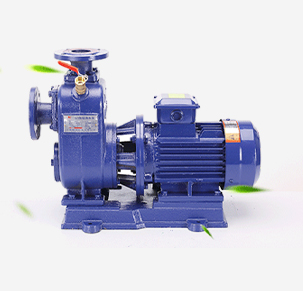Sindhi
- Afrikaans
- Albanian
- Amharic
- Arabic
- Armenian
- Azerbaijani
- Basque
- Belarusian
- Bengali
- Bosnian
- Bulgarian
- Catalan
- Cebuano
- Corsican
- Croatian
- Czech
- Danish
- Dutch
- English
- Esperanto
- Estonian
- Finnish
- French
- Frisian
- Galician
- Georgian
- German
- Greek
- Gujarati
- Haitian Creole
- hausa
- hawaiian
- Hebrew
- Hindi
- Miao
- Hungarian
- Icelandic
- igbo
- Indonesian
- irish
- Italian
- Japanese
- Javanese
- Kannada
- kazakh
- Khmer
- Rwandese
- Korean
- Kurdish
- Kyrgyz
- Lao
- Latin
- Latvian
- Lithuanian
- Luxembourgish
- Macedonian
- Malgashi
- Malay
- Malayalam
- Maltese
- Maori
- Marathi
- Mongolian
- Myanmar
- Nepali
- Norwegian
- Norwegian
- Occitan
- Pashto
- Persian
- Polish
- Portuguese
- Punjabi
- Romanian
- Russian
- Samoan
- Scottish Gaelic
- Serbian
- Sesotho
- Shona
- Sindhi
- Sinhala
- Slovak
- Slovenian
- Somali
- Spanish
- Sundanese
- Swahili
- Swedish
- Tagalog
- Tajik
- Tamil
- Tatar
- Telugu
- Thai
- Turkish
- Turkmen
- Ukrainian
- Urdu
- Uighur
- Uzbek
- Vietnamese
- Welsh
- Bantu
- Yiddish
- Yoruba
- Zulu
Telephone: +86 13120555503
Email: frank@cypump.com
Aug . 09, 2024 03:50 Back to list
Comparison of Horizontal Slurry Pumps and Peristaltic Pumps for Efficient Fluid Transfer Solutions
Understanding Horizontal Slurry Pumps and Peristaltic Pumps
When it comes to the efficient transportation of fluids, particularly in industrial applications, the choice of pump technology is paramount. Two pump types that are frequently discussed in this regard are horizontal slurry pumps and peristaltic pumps. Each has its specific applications, advantages, and limitations.
Horizontal Slurry Pumps
Horizontal slurry pumps are designed specifically for the transport of slurries—mixtures of solid particles and liquid. These pumps are typically constructed with heavy-duty materials to withstand the abrasive nature of the slurry they handle. The key characteristic of horizontal slurry pumps is their horizontal orientation, which allows for better stability and ease of maintenance.
The operation of horizontal slurry pumps relies primarily on centrifugal force, which creates a high flow rate and pressure. This allows them to handle thick mixtures that would otherwise pose challenges for other types of pumps. Common applications include mining, minerals processing, and wastewater treatment, where the efficiency of solid-liquid separation is crucial.
These pumps come in various sizes and configurations to accommodate different slurry densities and particle sizes. However, their complexity might require more maintenance, particularly in environments where they are exposed to harsh conditions.
Peristaltic Pumps
In contrast, peristaltic pumps operate on a fundamentally different principle. These pumps work by compressing and releasing a flexible tube or hose, which creates a vacuum that draws fluid in and then pushes it out. This makes peristaltic pumps uniquely suited for handling a variety of fluids, including those that are viscous or contain solids.
horizontal slurry pump peristaltic pump

One of the most significant benefits of peristaltic pumps is their ability to handle shear-sensitive fluids without damaging them. This feature makes them invaluable in industries such as food processing, pharmaceuticals, and biotechnology. The gentle pumping action ensures that the integrity of the fluid is maintained, which is essential in applications where product quality is vital.
Another advantage is their simple maintenance requirements. Since the fluid only comes into contact with the hose or tube, wear and tear are localized, and changing the tube is often all that's needed to restore the pump to full functionality.
Comparing the Two
While both horizontal slurry pumps and peristaltic pumps excel in their respective areas, the choice between them depends on the specific application's needs. Horizontal slurry pumps are ideal for large-scale operations handling significant quantities of abrasive slurries, particularly in mining and industrial settings. On the other hand, peristaltic pumps shine in applications requiring careful handling of delicate fluids or where the pump needs to be cleaned frequently.
Another factor to consider is the overall cost of ownership. Horizontal slurry pumps are often more expensive to purchase and maintain, given their complexity. In contrast, peristaltic pumps, with their straightforward design, may have a lower upfront cost but could require more frequent tube replacements depending on usage.
Conclusion
Ultimately, the decision to use a horizontal slurry pump or a peristaltic pump should be based on a careful assessment of the fluid's properties, the nature of the application, and budget considerations. Each pump type offers distinct advantages that can greatly influence operational efficiency and overall performance in fluid transport systems. By understanding the operational principles and applications of these pumps, industries can make informed choices that lead to better outcomes for their specific needs.
-
Horizontal Split Case Pump with GPT-4 Turbo | High Efficiency
NewsAug.01,2025
-
ISG Series Pipeline Pump - Chi Yuan Pumps | High Efficiency, Durable Design
NewsAug.01,2025
-
Advanced Flue Gas Desulfurization Pump with GPT-4 Turbo | Durable & Efficient
NewsJul.31,2025
-
ISG Series Vertical Pipeline Pump - Chi Yuan Pumps | Advanced Hydraulic Design&Durable Construction
NewsJul.31,2025
-
ISG Series Vertical Pipeline Pump - Chi Yuan Pumps | Energy Efficient & Low Noise
NewsJul.31,2025
-
pipeline pump - Chi Yuan Pumps Co., LTD.|High Efficiency&Low Noise
NewsJul.31,2025










